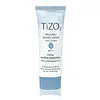What's inside
What's inside
 Key Ingredients
Key Ingredients

 Benefits
Benefits

 Concerns
Concerns

No concerns
 Ingredients Side-by-side
Ingredients Side-by-side

Titanium Dioxide 8%
Cosmetic ColorantZinc Oxide 3.8%
Cosmetic ColorantAlumina
AbrasiveCyclohexasiloxane
EmollientCyclopentasiloxane
EmollientDimethicone
EmollientDimethicone Crosspolymer
Emulsion StabilisingDimethicone/Vinyl Dimethicone Crosspolymer
Skin ConditioningDimethiconol
EmollientLauryl PEG/PPG-18/18 Methicone
Skin ConditioningHydrogen Dimethicone
PEG-10 Dimethicone
Skin ConditioningTetrahexyldecyl Ascorbate
AntioxidantTocopheryl Acetate
AntioxidantTitanium Dioxide 8%, Zinc Oxide 3.8%, Alumina, Cyclohexasiloxane, Cyclopentasiloxane, Dimethicone, Dimethicone Crosspolymer, Dimethicone/Vinyl Dimethicone Crosspolymer, Dimethiconol, Lauryl PEG/PPG-18/18 Methicone, Hydrogen Dimethicone, PEG-10 Dimethicone, Tetrahexyldecyl Ascorbate, Tocopheryl Acetate
Water
Skin ConditioningDibutyl Adipate
EmollientTitanium Dioxide
Cosmetic ColorantPropanediol
SolventCaprylic/Capric Triglyceride
MaskingCaprylyl Methicone
Skin ConditioningC12-15 Alkyl Benzoate
AntimicrobialDiethylamino Hydroxybenzoyl Hexyl Benzoate
UV FilterEthylhexyl Triazone
UV AbsorberNiacinamide
SmoothingGlycerin
Humectant1,2-Hexanediol
Skin ConditioningDiethylhexyl Butamido Triazone
UV AbsorberPunica Granatum Extract
AstringentPentylene Glycol
Skin ConditioningPrunus Persica Fruit Extract
AbrasiveLycium Chinense Fruit Juice
Skin ConditioningPunica Granatum Fruit Juice
MaskingPolymethylsilsesquioxane
Mica
Cosmetic ColorantPanthenol
Skin ConditioningPolyhydroxystearic Acid
EmulsifyingCoco-Caprylate/Caprate
EmollientVp/Eicosene Copolymer
Silica
AbrasiveDimethicone/Vinyl Dimethicone Crosspolymer
Skin ConditioningMethylpropanediol
SolventStearic Acid
CleansingDimethicone
EmollientTrisiloxane
Skin ConditioningAmmonium Acryloyldimethyltaurate/Vp Copolymer
Alumina
AbrasiveAmmonium Polyacryloyldimethyl Taurate
Emulsion StabilisingHydroxypropyl Methylcellulose Stearoxy Ether
Dicaprylyl Carbonate
EmollientXanthan Gum
EmulsifyingEthylhexylglycerin
Skin ConditioningTriethoxycaprylylsilane
Adenosine
Skin ConditioningSodium Polyacrylate
AbsorbentPvm/Ma Copolymer
Emulsion StabilisingSaccharomyces Ferment Filtrate
HumectantT-Butyl Alcohol
PerfumingPolyether-1
Tocopherol
AntioxidantParfum
MaskingCI 77492
Cosmetic ColorantCI 77491
Cosmetic ColorantWater, Dibutyl Adipate, Titanium Dioxide, Propanediol, Caprylic/Capric Triglyceride, Caprylyl Methicone, C12-15 Alkyl Benzoate, Diethylamino Hydroxybenzoyl Hexyl Benzoate, Ethylhexyl Triazone, Niacinamide, Glycerin, 1,2-Hexanediol, Diethylhexyl Butamido Triazone, Punica Granatum Extract, Pentylene Glycol, Prunus Persica Fruit Extract, Lycium Chinense Fruit Juice, Punica Granatum Fruit Juice, Polymethylsilsesquioxane, Mica, Panthenol, Polyhydroxystearic Acid, Coco-Caprylate/Caprate, Vp/Eicosene Copolymer, Silica, Dimethicone/Vinyl Dimethicone Crosspolymer, Methylpropanediol, Stearic Acid, Dimethicone, Trisiloxane, Ammonium Acryloyldimethyltaurate/Vp Copolymer, Alumina, Ammonium Polyacryloyldimethyl Taurate, Hydroxypropyl Methylcellulose Stearoxy Ether, Dicaprylyl Carbonate, Xanthan Gum, Ethylhexylglycerin, Triethoxycaprylylsilane, Adenosine, Sodium Polyacrylate, Pvm/Ma Copolymer, Saccharomyces Ferment Filtrate, T-Butyl Alcohol, Polyether-1, Tocopherol, Parfum, CI 77492, CI 77491
 Reviews
Reviews

Ingredients Explained
These ingredients are found in both products.
Ingredients higher up in an ingredient list are typically present in a larger amount.
Alumina is another name for the compound aluminum oxide. It is used as a thickener, absorbent, and abrasive.
As an absorbent, alumina can give a mattifying effect. It is used in mineral sunscreens to help coat nano-sized filters, such as titanium dioxide. By increasing the size of the UV filters, these ingredients stay on the skin for a longer time. By coating small sized ingredients, alumina helps thicken a product.
Alumina may be used as an abrasive, or exfoliant.
Alumina is naturally occurring in the mineral corundum. Certain varieties of corundum create rubies and sapphires. Corundum is also the crystalline form of alumina.
Learn more about AluminaDimethicone is a type of synthetic silicone created from natural materials such as quartz.
What it does:
Dimethicone comes in different viscosities:
Depending on the viscosity, dimethicone has different properties.
Ingredients lists don't always show which type is used, so we recommend reaching out to the brand if you have questions about the viscosity.
This ingredient is unlikely to cause irritation because it does not get absorbed into skin. However, people with silicone allergies should be careful about using this ingredient.
Note: Dimethicone may contribute to pilling. This is because it is not oil or water soluble, so pilling may occur when layered with products. When mixed with heavy oils in a formula, the outcome is also quite greasy.
Learn more about DimethiconeThis ingredient is a silicone used to improve the texture of products and absorb oil. It does not get absorbed into the skin.
Like other silicones, Dimethicone/Vinyl Dimethicone Crosspolymer helps condition the skin by creating a barrier. In this sense, it can act as an emollient and trap moisture in.
This ingredient is a type of elastomer.
Learn more about Dimethicone/Vinyl Dimethicone CrosspolymerTitanium dioxide is a mineral UV filter widely used in sunscreens and cosmetics.
It is one of only two UV filters officially classified as “mineral” by regulatory agencies, the other being zinc oxide.
Titanium dioxide provides broad-spectrum protection mostly in the UVB and UVAII range, with some protection in the UVAI range.
While its UVA protection isn’t as strong as zinc oxide’s, the difference is minor.
A common myth is that mineral UV filters reflect UV light. However, modern research shows titanium dioxide absorbs UV radiation like chemical filters (~95% absorption & 5% reflection).
Thanks to its non-irritating nature, titanium dioxide is suitable for sensitive, acne-prone, or redness-prone skin. It is unlikely to cause "eye sting" like other sunscreen ingredients.
A major drawback of this ingredient is its white cast and thick texture. This is why mineral sunscreens often leave a white cast and are less cosmetically elegant than chemical/hybrid sunscreens.
To improve white cast and spreadability, micronized or nano-sized titanium dioxide is often used.
There are ongoing concerns surrounding nano-titanium oxide's impact on marine ecosystems.
There is no conclusive evidence that any form of titanium oxide (or any other sunscreen ingredients) will cause harm to marine ecosystems or coral reefs. The science is still developing but many consumers are keeping a close eye on this issue.
Please note, many destinations have reef-safety sunscreen rules. For instance, the U.S. Virgin Islands advises all visitors to use non-nano mineral sunscreens.
Nano mineral sunscreens once raised safety concerns about absorption into skin.
Extensive research has shown that they do not penetrate healthy or damaged skin; they remain safely on the surface and the top layer of dead skin (stratum corneum).
You'll likely find titanium dioxide bundled with alumina, silica, or dimethicone. These ingredients help make titanium dioxide highly photostable; this prevents it from interacting with other formula components under UV light.
Learn more about Titanium Dioxide